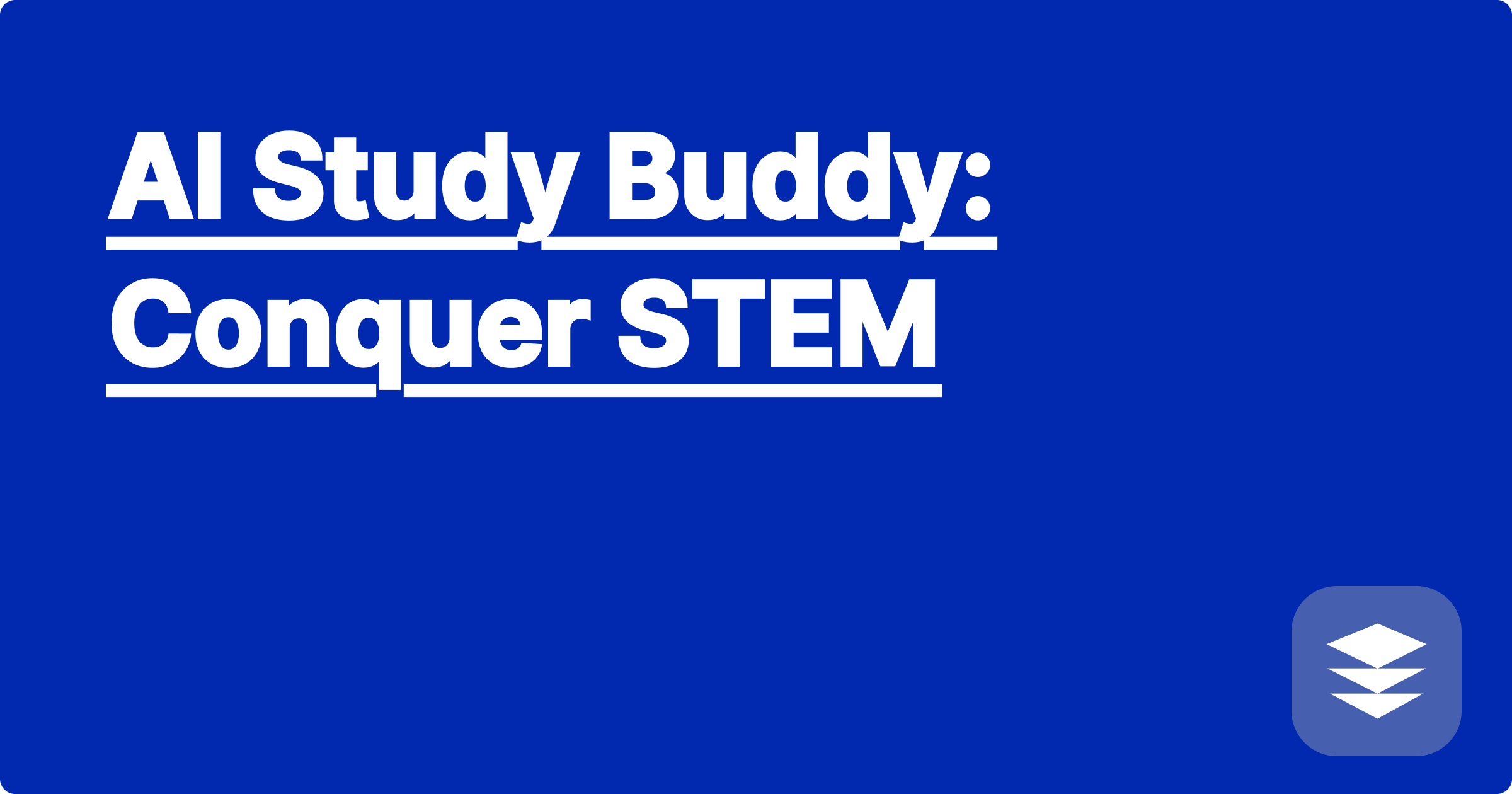
The world of STEM is a demanding one, filled with complex concepts, intricate equations, and mountains of research papers. Staying afloat, let alone excelling, can feel like a constant uphill battle. But imagine having a personalized study buddy, available 24/7, capable of analyzing vast datasets, summarizing complex research, and even helping you brainstorm innovative solutions. That's the power of AI, and it's revolutionizing how STEM students and researchers approach their work. This isn't just about using popular tools like ChatGPT; it's about harnessing a suite of lesser-known, specialized AI tools to create a truly personalized learning and research experience.
For STEM students, from undergraduates struggling with introductory courses to graduate students deep in their research, AI offers a lifeline. It's not about replacing hard work and dedication, but about amplifying your efforts, making you more efficient, and helping you achieve your academic and research goals. Whether you're aiming for a higher GPA, pushing the boundaries of your research, or preparing for a challenging career, AI can provide the edge you need. This blog post will explore how you can integrate AI into your workflow, focusing on practical strategies and showcasing niche tools that can transform your STEM journey. Think of this as a friendly guide from a senior who's been there, done that, and discovered the secrets to AI-powered success.
STEM fields often require a deep understanding of complex systems, demanding extensive time and effort to master. Students and researchers face challenges like information overload, difficulty in grasping abstract concepts, and the sheer volume of literature to review. For instance, in fields like bioinformatics, analyzing massive genomic datasets can be incredibly time-consuming. Similarly, in chemical engineering, optimizing complex reaction pathways requires extensive simulations and calculations. Traditional learning methods often fall short in addressing these challenges effectively. Students can get bogged down in rote memorization rather than developing a true understanding of the underlying principles. Researchers may spend countless hours manually sifting through papers, hindering their ability to focus on innovative problem-solving.
AI offers a powerful solution to these challenges by providing personalized learning experiences and automating tedious tasks. Imagine having a Generalized Personal AI (GPAI) assistant, constantly learning your strengths and weaknesses, curating relevant study materials, and providing personalized feedback. GPAI can be conceptualized as a personalized digital assistant that helps manage your tasks, schedule, and learning process. Think of it as having a dedicated research assistant that can summarize articles, generate code snippets, and even help you brainstorm new research directions. Beyond GPAI, specialized AI tools can further enhance your STEM journey. Tools like Wolfram Alpha can help solve complex mathematical equations and provide step-by-step solutions, freeing up your time for deeper conceptual understanding. You can also use AI-powered literature review tools to quickly identify relevant research papers and extract key insights, significantly accelerating your literature review process.
Integrating AI into your workflow can be seamless. Start by identifying your specific needs. Are you struggling with a particular subject? Do you need help managing your research project? Once you've identified your pain points, you can begin exploring relevant AI tools. For instance, if you're struggling with organic chemistry, you could use an AI-powered tutor that provides personalized practice problems and feedback. If you're overwhelmed by the volume of research papers you need to read, you could use a tool like Semantic Scholar to quickly identify relevant papers and summarize their key findings. Implementing GPAI involves defining your learning objectives and allowing the AI to tailor a study plan based on your strengths and weaknesses. This could involve setting specific goals, such as mastering a particular concept or completing a research task, and then letting GPAI guide you through the process.
Consider a biology student struggling with understanding complex metabolic pathways. They could use an AI-powered tool that visualizes these pathways and provides interactive simulations, allowing them to explore the intricacies of cellular processes. A physics student grappling with vector calculus could use Wolfram Alpha to solve complex vector integrals and visualize vector fields, strengthening their understanding of the underlying mathematical concepts. In research, a graduate student working on a machine learning project could use tools like Google Colab and TensorFlow to accelerate their model training and experimentation, freeing up their time to focus on interpreting the results and developing innovative solutions. For example, if a researcher is working on classifying images of different types of cells, they could use a pre-trained deep learning model from TensorFlow Hub and fine-tune it on their specific dataset, saving significant time and effort compared to building a model from scratch.
To maximize the benefits of AI, it's crucial to develop effective strategies. Treat AI tools as partners, not replacements for your own effort. Use them to augment your learning and research, not to outsource your thinking. Start by experimenting with different tools and finding the ones that best fit your learning style and research needs. Don't be afraid to explore less well-known tools; you might discover hidden gems that significantly improve your workflow. For example, Elicit is a powerful AI research assistant that can help you find relevant papers, summarize research findings, and even brainstorm new research questions. Another powerful tool is Consensus, which allows you to ask research questions and receive answers based on a synthesis of the scientific literature. These tools can significantly accelerate your research process and help you stay on top of the latest findings.
Finally, remember that consistent effort and active learning are still key to success. AI tools can provide valuable support, but they are most effective when used in conjunction with your own dedication and hard work. By combining the power of AI with your own intellectual curiosity and perseverance, you can unlock your full potential and conquer the challenges of STEM. Don't just survive; thrive. Embrace the power of AI and embark on a journey of accelerated learning and groundbreaking research. The future of STEM is here, and it's powered by intelligence, both human and artificial.